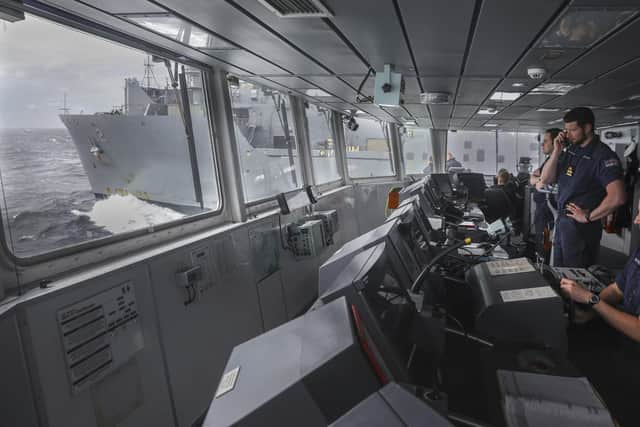Artificial intelligence used by Royal Navy in Scottish waters near the Hebrides for first time at sea
The Ministry of Defence (MoD) said the trial is part of Nato’s Exercise Formidable Shield, which is currently taking place off the coast of Scotland until June 3.
The research is being led by Defence Science and Technology Laboratory (DSTL) scientists – with the AI being tested on destroyer HMS Dragon and frigate HMS Lancaster.
Advertisement
Hide AdAdvertisement
Hide AdThe MoD said the AI improves the early detection of lethal threat, accelerates engagement timelines and provides Royal Navy Commanders with a rapid hazard assessment to select the optimum weapon or measure to counter and destroy the target.


The trial is testing two AI applications, Startle and Sycoiea, with the former designed to provide live recommendations and alerts to sailors monitoring the “Air Picture”, and the latter identifying the nearest threat and how best to deal with it.
Autonomous threat monitoring application Startle additionally offers the potential to streamline operations by reducing operational fatigue of officers and improving efficiency in the face of potential naval threats.
Likewise, Sycoiea is able to quickly identify incoming missiles and effectively advise officers on the best means and weapons to destroy them.
Both AI-based systems are also being tested to ensure they work alongside existing radar and combat management systems.
Scottish Secretary Alister Jack said: “It’s vital that our brave and highly skilled armed forces stay ahead of the game for the security of the United Kingdom and our allies.
“The Royal Navy’s use of AI for the first time at sea is an important development in ensuring readiness to tackle threats we may face.
“I’m proud to see that two Scottish-built Royal Navy vessels are at the heart of this exercise in the waters off the Hebrides.”
Advertisement
Hide AdAdvertisement
Hide AdThe operation exercise marked the first time that AI has been used in testing against live missiles and offered “a glimpse into our highly autonomous future”, said Lancaster’s Weapon Engineer Officer Lieutenant Commander Adam Leveridge.
HMS Lancaster’s Weapon Engineer Officer, Lieutenant Commander Adam Leveridge said: “Observing Startle and Sycoiea augment the human warfighter in real time against a live supersonic missile threat was truly impressive – a glimpse into our highly-autonomous future.”
A message from the Editor:
Thank you for reading this article. We're more reliant on your support than ever as the shift in consumer habits brought about by coronavirus impacts our advertisers.
If you haven't already, please consider supporting our trusted, fact-checked journalism by taking out a digital subscription.
Comments
Want to join the conversation? Please or to comment on this article.